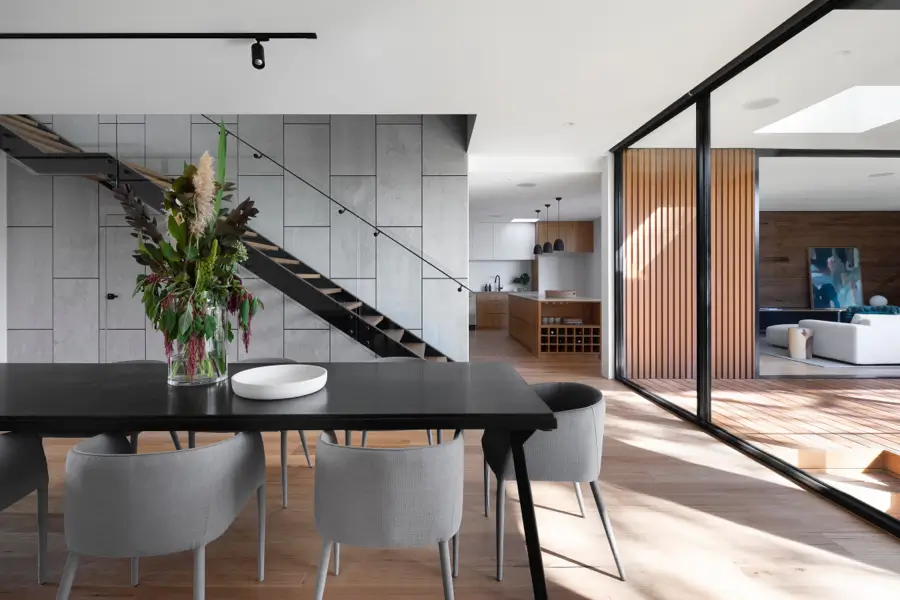
PROFESSIONAL DEVELOPMENT

When people hear the term “interior design” they often picture fluffy pillows and tufted headboards, or perhaps a beautifully designed space with pops of color and interesting textures. The term is used so frequently and interchangeably with “interior decorating” that many people mistakenly use it to refer to almost any kind of home design project.
While there is overlap, interior design and interior decorating are actually separate professions with different skill sets. The confusion between the two stems from a long history of blurred terminology and similar job descriptions. So, what is the difference between an interior designer and an interior decorator? We break it down for you here.
While both interior design and decorating are concerned with creating aesthetically pleasing rooms and spaces, an interior designer is focused on far more than surface-level aesthetics. Interior design is an applied art form that not only requires artistic talent but encompasses the practical and functional elements of a space as well as the more subjective, such as how it feels to be in a space.
Interior designers also consider how a room will be used and who will use it when designing its layout and finishes. Interior decorating, on the other hand, is more focused on surface treatments like paint colors, furnishings, or decorative items. In short, an interior designer is a technical expert with a creative eye, while an interior decorator is more of a stylist, concerned with the look and feel of a space.
It’s understandable that people are easily confused by the terms interior design and decorating because few people outside of these professions have insight into the details of how they differ, beyond their work product. Understanding the difference between the two is quite simple, however, once you break down each profession’s main components.
An accredited post-secondary degree (associate’s or bachelor’s) or professional certificate in interior design or interior architecture is required to become a certified interior designer.
Interior design is a multifaceted profession that requires knowledge about architecture, space planning, building codes and regulations, materials and finishes, acoustics, accessibility, lighting, life-safety systems, and energy efficiency, just to name a few. Interior design schools provide such a place of learning for designers entering the field.
Certification through the National Council for Interior Design Qualification (NCIDQ) is a widely recognized credential that is required of designers seeking the title of “Certified Interior Designer”. Certification is not a requirement to become an interior designer, but it does ensure a minimum standard of professional competency, expertise, and experience for prospective clients.
An interior designer’s responsibilities can vary greatly on a daily basis, depending on the needs of their client(s), the scope of a project, and any other factors at play. Interior designers are capable of providing everything from pre-construction design services to full project management of the construction process, so most of an interior designer’s daily activities can fall anywhere on a spectrum between these two extremes.
While an interior designer has a broad scope of practice, an interior decorator tends to focus more on the aesthetic of a space, with less thought towards the functionality or technical elements – things like paint colors, flooring, furnishings, and accents. In this way, the work product of a decorator differs greatly from that of a designer and distinguishes them in terms of job function.
Additionally, there are significant differences between the education, certification, and experience levels of designers and decorators:
Unlike their counterparts in the design profession, interior decorators are not required to have formal education or training. With no such requirements or licensing system in place, anyone can call themselves an interior decorator with little or no training, experience, or certification.
This is not to say that decorators lack merit or that they are not knowledgeable of the industry. In fact, many decorators have a great deal of experience and knowledge about their craft – it’s just not typically in conjunction with design.
Even though formal education and training are not required, there are several certification programs available to interior decorators. Interior decorator certification is a way to demonstrate a level of competency and professionalism, as well as a way to increase credibility in the design community.
Certifications from organizations like Certified Interior Decorators International (C.I.D.) help professional interior decorators distinguish themselves from hobbyists, as well as safeguard clients from hiring inexperienced or unqualified decorators.
An interior decorator’s daily responsibilities typically include working with the client to determine their aesthetic preferences, selecting furnishings and accessories, selecting certain paint colors or fabrics, and coordinating the installation of selected items.
Their responsibilities may also include purchasing and/or sourcing new or used furniture, arranging for the disposal of existing furnishings, managing the logistics of moving heavy objects from one location to another, consulting on proper lighting levels, and contributing to other design decisions.
There is no question that interior designers and decorators are both valuable members of the design community. That being said, the differences between an interior designer and decorator are significant enough for each to have their own distinct roles within the industry.
An interior designer’s unique position on the design spectrum makes them particularly well suited for projects with a wide range of design needs, from designing complex renovations to reimagining the design elements of existing space and offering recommendations for improvement. An interior decorator, on the other hand, is more suited to projects that are more aesthetically driven, with less emphasis on the functionality or technical elements of design.
The key takeaway is that both an interior designer and an interior decorator can play significant roles in improving the flow, function, style, and aesthetics of an individual space.

The Art Career Project is a trusted resource for emerging and professional artists.